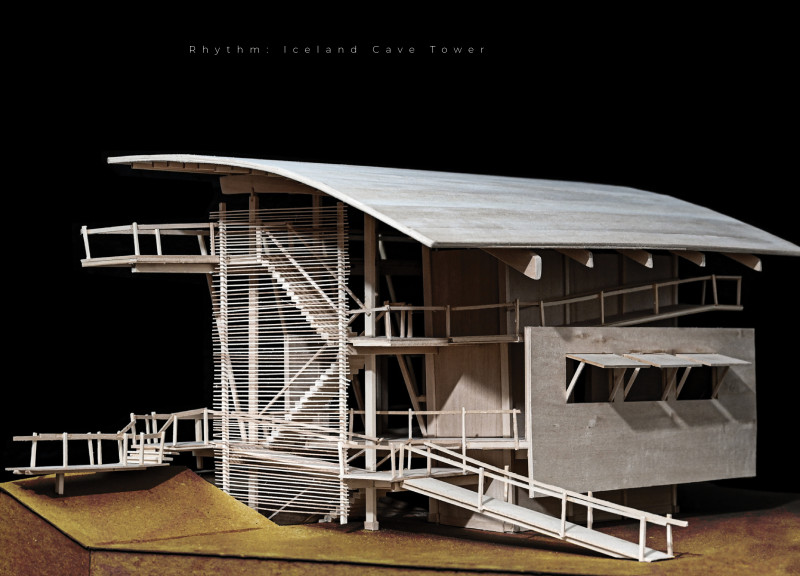5 key facts about this project
Rhythm: Iceland Cave Tower is located in Iceland, serving as a visitor center that connects people with the stunning natural landscape. The design invites visitors on a journey, blending architecture with the environment. By emphasizing both the elevated and underground experiences, the structure encourages exploration and appreciation of its surroundings.
Central Structure
The design features a central core made of weathered steel, which offers durability and an appearance that fits the rugged landscape. Visitors walk along catwalks that wrap around this core, reaching an upper balcony that presents wide views of the area. Standing at this height allows individuals to reflect and take in the beauty of the landscape below.
Subterranean Experience
Descending from the elevated paths leads visitors to the subterranean area within Karlagjá. This transition from the upper levels to below ground adds depth to the experience, motivating guests to explore various aspects of the natural terrain. The project acknowledges the importance of the nearby caves and ravines, integrating them as key features of the overall design.
Gathering Spaces
An open-air outpost acts as a gathering area for hikers and visitors. Accessible through three hatches along the main path, this space provides shelter while keeping a strong connection to the outdoors. The large roof structure protects visitors from the weather, creating a communal area where people can come together.
Functional Core
A central service core is essential for the building's operations, housing systems such as geothermal power and water storage. This insulated space ensures that the facility functions efficiently. The approach to construction allows for the core and lower pathways to be completed first, enabling early use and financial support for the project.
In the stair tower, a ceramic screen filters light, creating a pleasant atmosphere inside. This feature enhances the connection between the indoor spaces and the natural surroundings. Natural light plays a key role in shaping the visitor experience, highlighting the relationship between architecture and nature.






















































